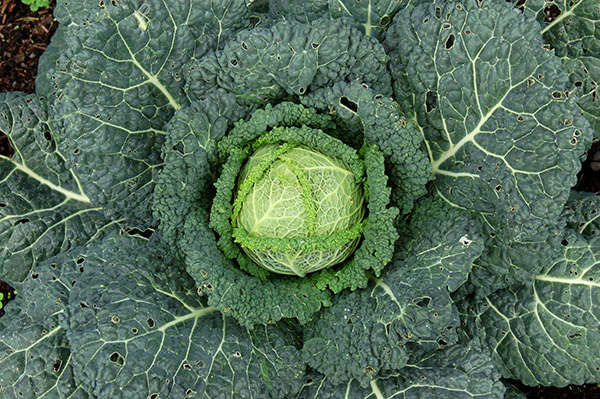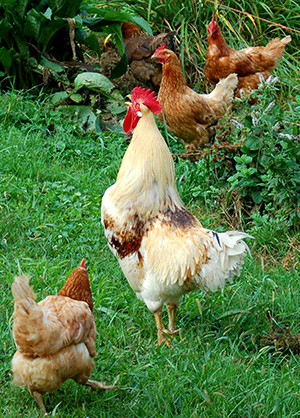It’s late autumn and Halloween jack-o-lanterns sag and melt away in forgotten corners of the yard along with left-over dead cornstalks. The ghosts of last summer’s bounty linger in flower beds and vegetable gardens. The bright leaves of maple and oak that covered the ground earlier in the season are brown and soggy.
As every gardener knows, a garden generates waste. The outer leaves of cabbage, corn husks, pea vines, fruit tree prunings, and so forth are produced in abundance every growing season. Many people have a lawn to deal with also, and a lawn results in grass clippings. And of course there are always weeds!
You can transform all this material from valueless waste to precious black gold by composting it. And it’s relatively easy to do because most of the work is done for you (for free!) by beneficial micro-organisms like fungi and bacteria. There are a couple of secrets that you should know before you start, however.
First, remember this little ditty: two thirds brown and one third green makes my compost neat and clean.
The ditty is important because it reminds you of the proper proportions of materials to put in your compost. Brown refers to all plant waste that is dry: autumn leaves, straw, corn stalks, brown paper bags, brown cardboard boxes, even newspaper or sawdust. Green refers to all plant waste that is soft and moist: apple peels, potato peels, carrot tops, cabbage or lettuce leaves, and other kitchen waste along with old bouquets, fresh grass clippings, or garden trimmings. Run a lawnmower over the autumn leaves to shred them into smaller particles. Shred newspaper or cardboard. Chip prunings from fruit trees or rose bushes. Reduce the size of all the material to small chunks for more rapid decomposition.
Measure by the handful or the bucket. However you measure, use two parts brown to one part green to keep your compost from becoming too wet and dense for the bacteria and fungi to do a proper job. And avoid putting any animal waste like bones or fat into your compost. It might produce unpleasant smells and it will definitely attract rats and raccoons or neighborhood dogs and cats.
You can pile up these materials in a corner of the garden or you can put it into a container of some sort. Wherever you put it, toss it in randomly so that it’s all mixed up as you build it.
The second secret to success is that you need to add one shovelful of dark, biologically active garden soil for every three shovels-full of your brown/green mix. The soil is important because it’s the primary source of the inoculum of bacteria and fungi that are going to transform the pile into compost. In addition to the soil, I like to add a shovel-full of chicken manure to the mix using the same proportions of one shovel of chicken manure to three shovels-full of the brown/green mix. Chicken manure is higher in nitrogen than steer or horse manure and is also an excellent source of bacteria and fungi to get your compost working. Moisten the mix with a hose as you build it but don’t make it soggy wet.
Follow these tips and your compost pile will heat up as the population of micro-organisms booms into billions and billions of tiny decomposers munching away on all the dead plant material. It can generate quite a lot of heat as it works. If it gets up to 140 degrees Fahrenheit it will be hot enough to kill weed seeds or pathogenic fungi and bacteria in infected plant material. You can get a really long thermometer to measure the temperature of your compost while it’s working. But, if you don’t trust it to get that hot then do not put weeds or diseased material into the compost mix.
When the mix starts to cool down again you need to stir it with a pitch fork to redistribute the hot center and the cooler sides. Once you’ve stirred it, it will heat up again and then it will cool down. Repeat this process until the compost is finished working and you have dark, friable, good-smelling compost.
If you live in a cool, wet climate your compost will benefit from being covered to keep it from becoming soggy in the rain. It won’t work properly if it’s a soggy, cold, airless pile of garbage. If you live in a warm, dry climate your compost will benefit from some shade to keep it from baking dry in the relentless sun, and you will also need to moisten it with the hose occasionally.
What you get when you’re finished is an inexpensive soil amendment that will benefit every plant in your garden, from vegetables to landscape shrubs and trees. Compost is the best soil amendment to improve the texture of problem soils. It helps with moisture retention in sandy soils that are too well drained. It also helps heavy clay soils through a chemical reaction which creates peds (blocks or chunks) that allow better drainage. In addition, it’s a rich source of nutrients and beneficial micro-organisms that will help your garden grow.





Leave a Reply